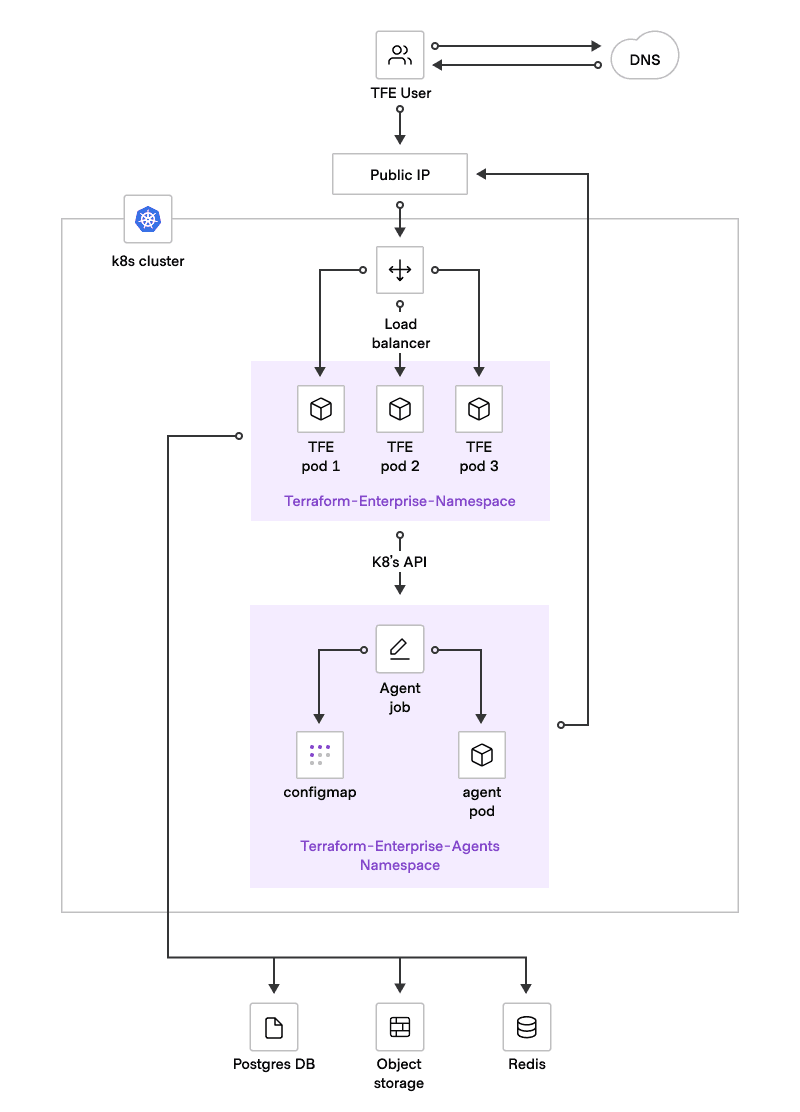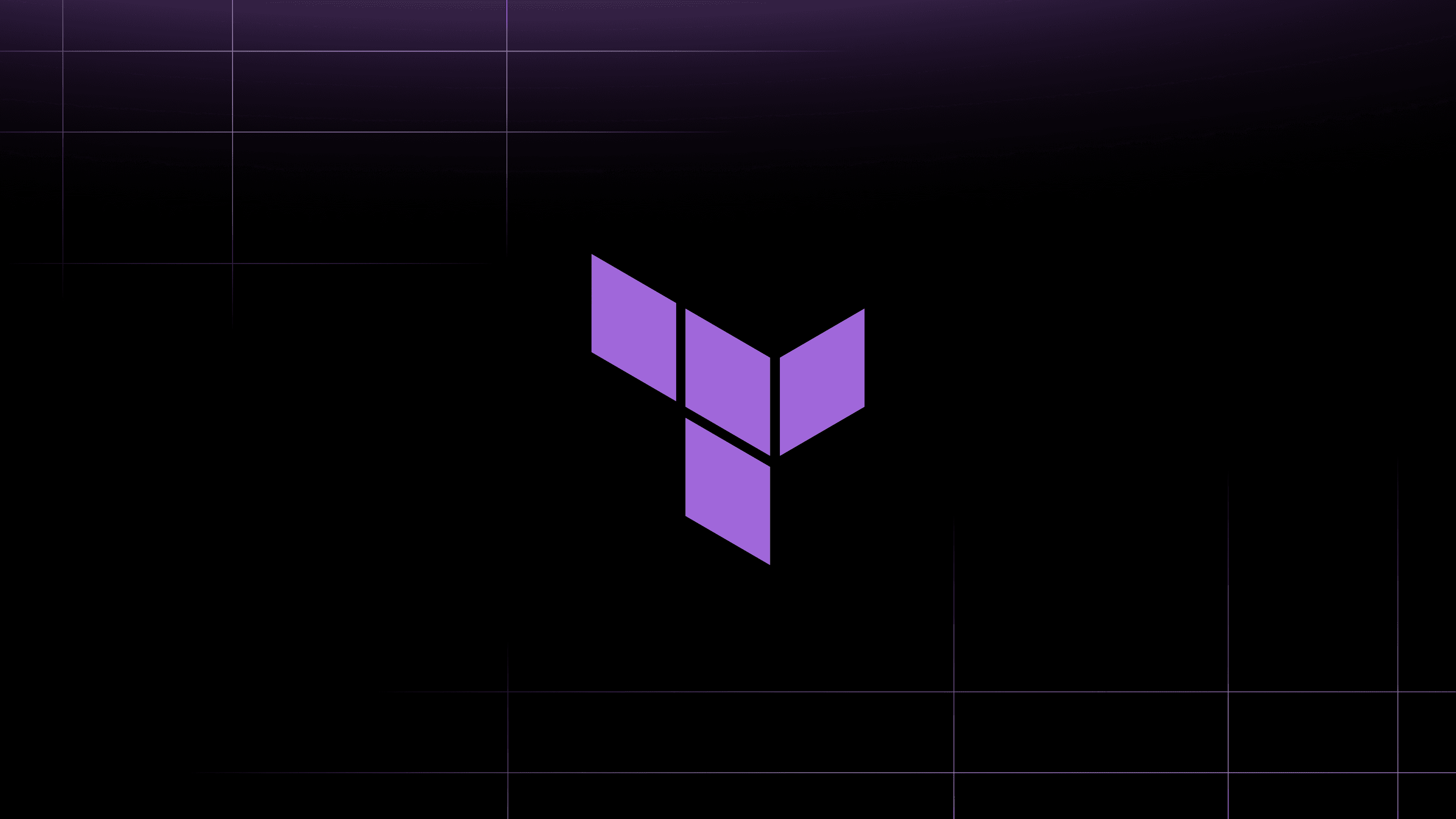There are countless ways to deploy and operate enterprise applications today, and every team has their preferred toolstack. Standardizing around consistent deployment patterns can reduce operational costs by focusing skill sets on a smaller scope of technologies, and reduce operational complexity by allowing teams to re-use peripheral tools and workflows such as monitoring tools and security scanning processes, across all internal applications.
With that in mind, starting with v202309-1, HashiCorp has made operating Terraform Enterprise more flexible than ever. We are excited to announce that Terraform Enterprise now supports two new deployment options: Docker Engine and cloud-managed Kubernetes services (Amazon EKS, Microsoft Azure AKS, and Google Cloud GKE). This allows customers with a preference for Docker or Kubernetes to follow industry-standard patterns for deploying applications in these environments, and simplify overall operation of Terraform Enterprise. These new deployment options are enabled by the new simplified single-container architecture first introduced in Terraform Enterprise v202306-1 and enabled by default on v202309-1.
»Deploy Terraform Enterprise with Docker Engine
You can now deploy Terraform Enterprise natively with Docker Engine using Docker Compose. This new deployment option supports all existing operational modes: mounted disk, external services, and active/active. Our recommended Docker architecture at this time is to run Docker on a Linux VM, as this option closely mirrors historical Terraform Enterprise deployments using Replicated. In fact, you can use our migration guides to re-use the infrastructure for your existing Replicated-based deployment of Terraform Enterprise.
For more information on the Docker Engine deployment option, check out the Docker requirements and installation documentation.
»Deploy Terraform Enterprise with cloud-managed Kubernetes
Terraform Enterprise can also now be deployed to Amazon EKS, Azure AKS, and Google Cloud GKE using Helm. When running Terraform Enterprise on managed Kubernetes, you do not need to specify an operational mode. All Kubernetes installations require an external PostgreSQL database, object storage, and a Redis instance. When Terraform Enterprise is deployed in Kubernetes, runs execute in ephemeral agent pods in a dedicated namespace, allowing for more responsive scaling of run workloads independent from terraform-enterprise (server) pods.

Typical architecture of Terraform Enterprise deployed on Kubernetes
For more information on the cloud-managed Kubernetes deployment option, check out the Kubernetes requirements, installation, and scaling documentation.
»Administration improvements
The new deployment options for Terraform Enterprise include several additional startup and administration improvements. In addition, capabilities previously provided by the Replicated Native Scheduler have been replaced with new solutions. Replaced capabilities include license management, release distribution, the administration console, and CLI.
»Improved startup experience
The new lightweight, single-container architecture allows for significantly faster startup times. When using one of the new deployment options, several startup checks can help quickly diagnose configuration issues and prevent the application from starting up in a risky state.
»License management
To install one of the new deployment options you will need a new HashiCorp (.hcli) license file. This is a technical change only, it does not impact contractual agreements with HashiCorp. If you are an existing Terraform Enterprise customer, you should have received this new file in your email by Thursday, September 21, 2023. If you did not receive a new license file or have any questions, contact your HashiCorp account representative for assistance.
»Release distribution
When using one of the new deployment options, you will now source new Terraform Enterprise versions from the images.releases.hashicorp.com container registry. The install guides for Docker Engine and Kubernetes include instructions on how to access the registry.
»Administration changes
The admin console UI, tfe-admin CLI, and replicatedctl CLI are no longer present when running Terraform Enterprise on one of the new deployment options. A new admin CLI, tfectl, now provides a consistent administration experience across all new deployment options.
»Next steps
The new deployment options for Terraform Enterprise help reduce operational costs, complexity, and risk by providing the flexibility to choose the platform that fits your organizational standards and preferences.
For more information about the latest releases of Terraform Enterprise, visit the Terraform Enterprise releases page. To learn more about Terraform Cloud and Enterprise or to get started, visit the Terraform product page and contact HashiCorp Sales.









